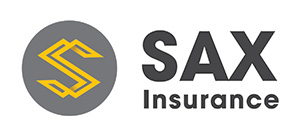Comprehensive Insurance Guide for Condominium Associations by Sax Insurance
Condominium associations operate in a unique space, balancing the responsibilities of property management, community governance, and resident safety. Unlike traditional property owners, these associations oversee shared spaces, structural elements, and amenities used by multiple unit owners, creating a complex web of liability and property risks. A single incident—such as a fire in a common area, a slip-and-fall accident, or a board decision leading to a lawsuit—can have significant financial and legal consequences. At Sax Insurance, we specialize in crafting tailored insurance solutions for condominium associations, ensuring protection for members, assets, and operations. In this comprehensive guide, we explore the unique risks faced by condominium associations, outline essential insurance policies, and share practical strategies for effective risk management and compliance.
Why Standard Property Insurance Isn’t Enough
Traditional property insurance policies are designed for individual or commercial property owners, covering personal homes or business premises. However, condominium associations are responsible for managing shared elements—such as roofs, lobbies, elevators, and recreational facilities—that serve multiple unit owners. These common areas introduce unique risks that standard policies often fail to address, including:
- Complex Liability Exposures: Incidents in shared spaces, like a visitor slipping in a hallway, can lead to lawsuits against the association.
- Shared Property Risks: Damage to common structures, such as a leaking roof or a broken elevator, affects all unit owners and requires collective coverage.
- Governance Risks: Board members making decisions on behalf of the association may face lawsuits for alleged mismanagement or errors.
- Financial Vulnerabilities: Theft or fraud by board members or employees can jeopardize association funds.
To address these complexities, condominium associations need specialized insurance policies that align with their unique responsibilities, state laws, and association bylaws.
Understanding the Unique Risks of Condominium Associations
Condominium associations face a distinct risk profile due to their shared ownership model and governance structure. Below, we outline the key risks that necessitate tailored insurance coverage:
1. Property and Infrastructure Risks
Condominium associations are responsible for maintaining shared structures and amenities, which are vulnerable to:
- Physical Damage: Fires, storms, vandalism, or wear-and-tear can damage common areas like lobbies, hallways, roofs, or recreational facilities (e.g., pools or gyms).
- Equipment Failures: Elevators, HVAC systems, and other shared infrastructure can break down, leading to costly repairs and potential disruptions.
- Natural Disasters: In high-risk areas, floods, earthquakes, or hurricanes can cause extensive damage to shared property, requiring specialized coverage.
2. Liability Risks
Shared spaces in condominiums are high-traffic areas, increasing the likelihood of accidents and liability claims:
- Bodily Injury: Slip-and-fall incidents, elevator malfunctions, or accidents in recreational areas can result in lawsuits from residents, visitors, or vendors.
- Property Damage: Damage to a visitor’s property, such as a car in a parking garage, can lead to claims against the association.
- Board Decisions: Decisions made by the association’s board, such as enforcing bylaws or allocating funds, can trigger disputes or lawsuits from unit owners.
3. Financial and Governance Risks
Condominium associations manage significant funds and make decisions that impact all unit owners, creating additional exposures:
- Theft or Fraud: Mismanagement of association funds by board members, employees, or third-party managers can lead to financial losses.
- Regulatory Non-Compliance: Failure to comply with state laws or association bylaws can result in fines, legal disputes, or loss of credibility.
- Assessment Costs: Major losses, such as a fire or flood, may require unit owners to pay special assessments, creating financial burdens if not properly insured.
Essential Insurance Policies for Condominium Associations
To mitigate these risks, condominium associations need a comprehensive insurance portfolio tailored to their unique needs. Sax Insurance recommends the following policies to ensure robust protection:
1. Property Insurance (Master Policy)
- What it covers: This policy protects shared structures and common areas, including roofs, lobbies, hallways, elevators, stairwells, and recreational facilities like pools or fitness centers, against perils such as fire, vandalism, or storms.
- Why it’s essential: Damage to shared infrastructure can disrupt the entire community and lead to costly repairs. A master policy ensures the association can restore common areas without imposing excessive financial burdens on unit owners.
2. General Liability Insurance
- What it covers: This policy protects against claims of bodily injury, personal injury, or property damage in shared spaces. For example, it could cover medical and legal expenses if a resident slips in a hallway or a visitor’s car is damaged in the parking garage.
- Why it’s essential: Common areas are high-traffic zones, making liability claims a constant risk. General liability insurance provides a critical safety net for unexpected incidents.
3. Directors and Officers (D&O) Liability Insurance
- What it covers: This policy protects board members and officers against lawsuits related to decisions made in their official capacity, such as disputes over bylaw enforcement, budget allocations, or maintenance decisions.
- Why it’s essential: Board members, often volunteers, face personal liability for decisions that unit owners may challenge. D&O insurance safeguards their personal assets and encourages confident decision-making.
4. Fidelity Bond/Crime Insurance
- What it covers: This policy protects against financial losses due to theft, fraud, or embezzlement by board members, employees, or third-party managers handling association funds.
- Why it’s essential: Associations manage significant budgets for maintenance, repairs, and reserves. Fidelity bond insurance ensures financial security and maintains trust among unit owners.
5. Workers’ Compensation Insurance
- What it covers: This policy provides medical care, wage replacement, and rehabilitation benefits for employees or contracted workers (e.g., maintenance staff or security personnel) injured on the job.
- Why it’s essential: If the association employs staff or contracts workers, workers’ compensation is often legally required and protects against lawsuits related to workplace injuries.
6. Additional Coverage Considerations
Depending on the association’s location and operations, the following policies may be necessary:
- Flood and Earthquake Insurance: In high-risk areas, these policies protect against natural disasters that could devastate shared structures. Standard property insurance often excludes these perils, making separate coverage critical.
- Loss Assessment Coverage: This policy helps unit owners cover costs assessed by the association after a major loss, such as a deductible for a master policy claim or uninsured damages. It can be included in the association’s policy or purchased by individual unit owners.
Risk Management Best Practices for Condominium Associations
While insurance is essential, proactive risk management is equally important to minimize incidents, ensure compliance, and maintain a safe and harmonious community. Sax Insurance recommends the following best practices:
1. Conduct Regular Maintenance and Inspections
- Schedule routine inspections of shared infrastructure, such as elevators, roofs, and fire suppression systems, to identify and address potential hazards.
- Maintain detailed records of maintenance activities to demonstrate due diligence and compliance with insurance requirements and bylaws.
- Address resident-reported issues promptly to prevent minor problems from escalating into major claims.
2. Review and Update Association Bylaws
- Ensure bylaws clearly outline insurance responsibilities for the association and unit owners, including coverage for shared versus individual property.
- Regularly review bylaws to align with state laws and evolving community needs, reducing the risk of disputes or non-compliance.
- Communicate insurance requirements to unit owners to ensure they maintain adequate personal coverage, such as HO-6 policies.
3. Foster Transparent Governance
- Train board members on their fiduciary duties and risk management responsibilities to minimize the likelihood of D&O claims.
- Maintain transparent financial practices, including regular audits and clear reporting, to prevent fraud and build trust with unit owners.
- Engage legal counsel to review major decisions, such as special assessments or bylaw changes, to reduce liability exposure.
4. Partner with an Experienced Insurance Agency
- Work with an insurer like Sax Insurance that specializes in HOA and condominium association insurance, understanding the intricacies of shared ownership and governance.
- Conduct annual risk assessments with your insurance advisor to tailor coverage to the association’s specific needs, such as location, amenities, or budget.
- Ensure policies comply with state laws and association bylaws to avoid coverage gaps or legal disputes.
Why Choose Sax Insurance?
At Sax Insurance, we specialize in providing customized insurance solutions for condominium associations, offering expertise in the unique dynamics of shared ownership and community governance. Our experienced advisors work closely with association boards and property managers to assess risks, recommend appropriate coverage, and ensure compliance with state laws and bylaws. By combining robust insurance policies with proactive risk management strategies, we help condominium associations protect their assets, members, and reputation while fostering a safe and thriving community.
Conclusion
Condominium associations face a complex array of risks, from property damage in shared areas to liability claims and governance disputes. By securing essential insurance policies, such as Property Insurance, General Liability, and Directors and Officers coverage—associations can mitigate these risks and ensure long-term stability. With strategic risk management and the expertise of Sax Insurance, condominium associations can focus on maintaining vibrant communities while safeguarding their members and assets. Contact us or visit our services page to learn more about our specialized insurance solutions for condominium associations.


